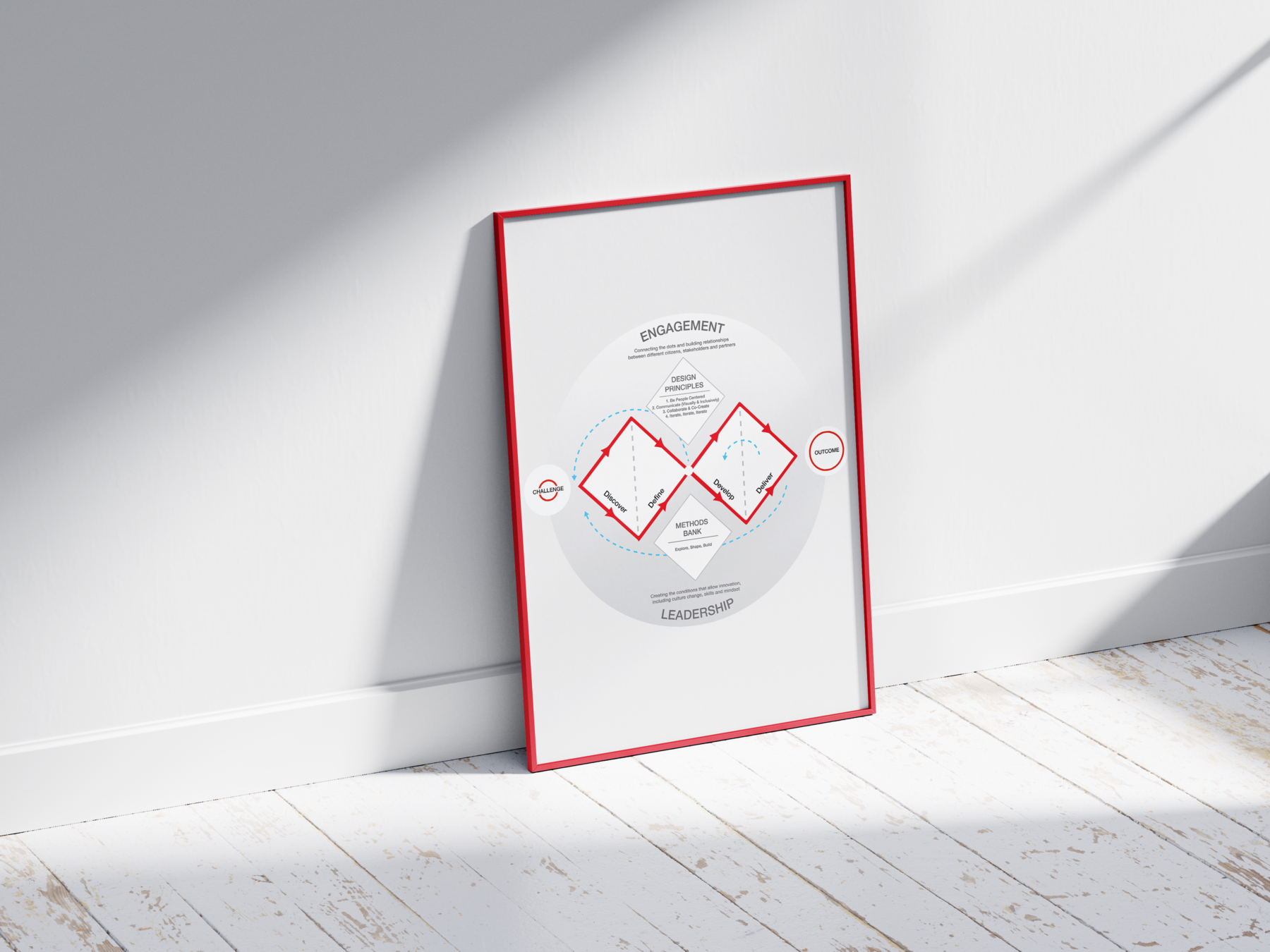Framework for Innovation
Helping designers and non-designers across the globe tackle some of the most complex social, economic and environmental problems.
The framework is fundamental to our work
It enables us to support the public, private and third sector organisations we work with transform the way they develop and deliver their services.

 This work by the Design Council is licensed under a CC BY 4.0 license.
This work by the Design Council is licensed under a CC BY 4.0 license.
At the heart of the framework for innovation is Design Council’s design methodology, the Double Diamond – a clear, comprehensive and visual description of the design process. Launched in 2004, the Double Diamond has become world-renowned with millions of references to it on the web.
As well as highlighting the design process, Design Council’s framework for innovation also includes the key principles and design methods that designers and non-designers need to take, and the ideal working culture needed, to achieve significant and long-lasting positive change.

The process: using the Double Diamond
Design Council’s Double Diamond clearly conveys a design process to designers and non-designers alike. The two diamonds represent a process of exploring an issue more widely or deeply (divergent thinking) and then taking focused action (convergent thinking).
- Discover. The first diamond helps people understand, rather than simply assume, what the problem is. It involves speaking to and spending time with people who are affected by the issues.
- Define. The insight gathered from the discovery phase can help you to define the challenge in a different way.
- Develop. The second diamond encourages people to give different answers to the clearly defined problem, seeking inspiration from elsewhere and co-designing with a range of different people.
- Deliver. Delivery involves testing out different solutions at small-scale, rejecting those that will not work and improving the ones that will.
This is not a linear process as the arrows on the diagram show. Many of the organisations we support learn something more about the underlying problems which can send them back to the beginning. Making and testing very early stage ideas can be part of discovery. And in an ever-changing and digital world, no idea is ever ‘finished’. We are constantly getting feedback on how products and services are working and iteratively improving them.
The design principles
The framework for innovation outlines four core principles for problem-solvers to adopt so that they can work as effectively as possible.
- Put people first. Start with an understanding of the people using a service, their needs, strengths and aspirations.
- Communicate visually and inclusively. Help people gain a shared understanding of the problem and ideas.
- Collaborate and co-create. Work together and get inspired by what others are doing.
- Iterate, iterate, iterate. Do this to spot errors early, avoid risk and build confidence in your ideas.
The methods bank
We have authored, adapted or adopted a portfolio of design methods which help our clients to identify and address their challenges and achieve successful outcomes. We have structured these methods in three areas to help them use the design process to explore, shape or build:
- Explore: challenges, needs and opportunities
- Shape: prototypes, insights and visions
- Build: ideas, plans and expertise
Creating a culture of success
The problems we face today require more than one idea, they require working with other organisations and supporting people to be part of the solution. As important as the process and principles organisations we adopt, is the culture of an organisation and how it connects with citizens and partners.
Leadership is needed to encourage innovation, build skills and capability, provide permission for experimentation and learning. Strong leadership also allows projects to be open and agile, showing results along the way and being able to change.
Engagement is needed with people who are delivering the ideas and receiving them, but also with other partners who might have other ideas. Developing connections and building relationships is as important as creating ideas.

